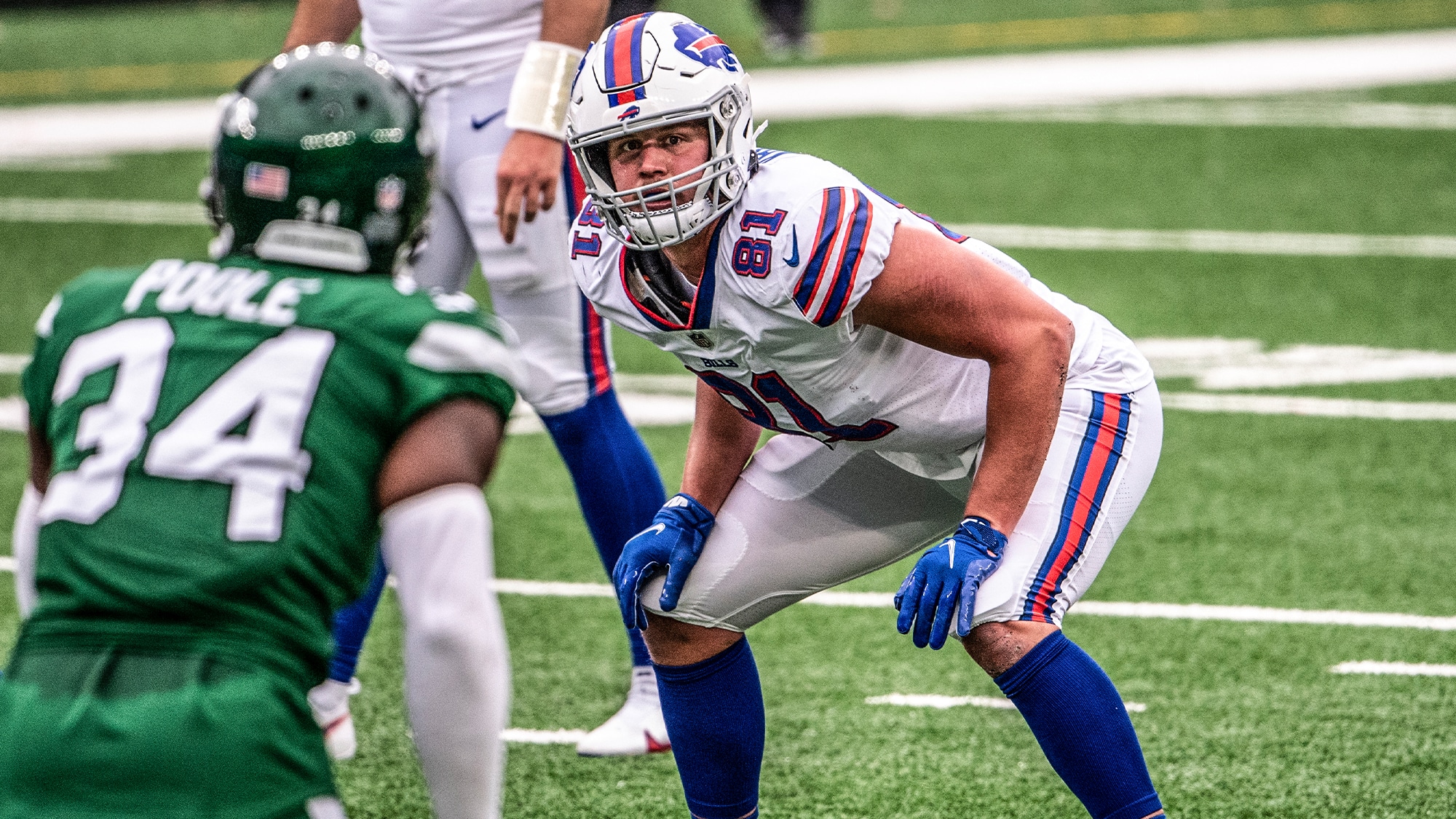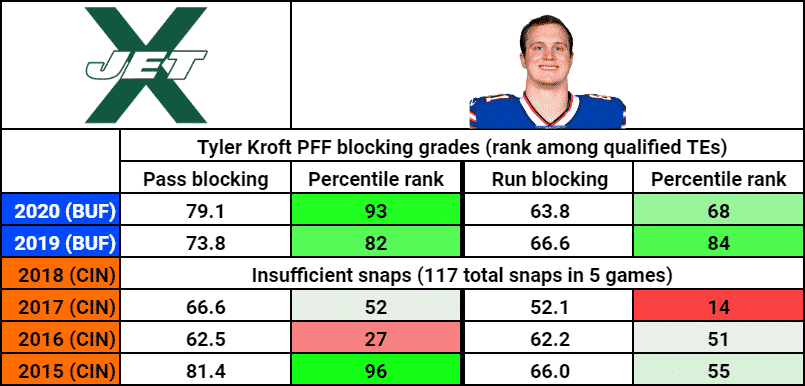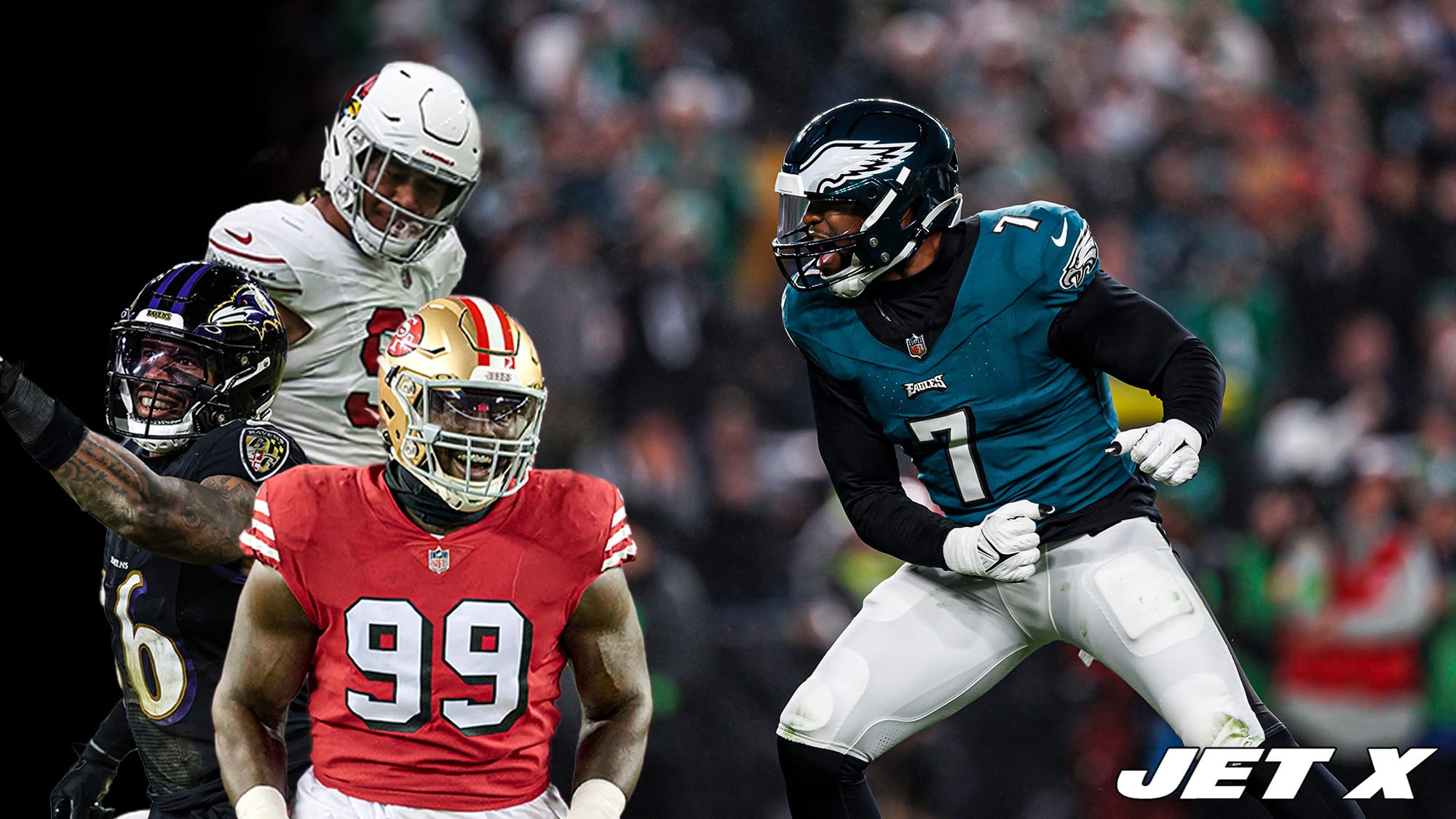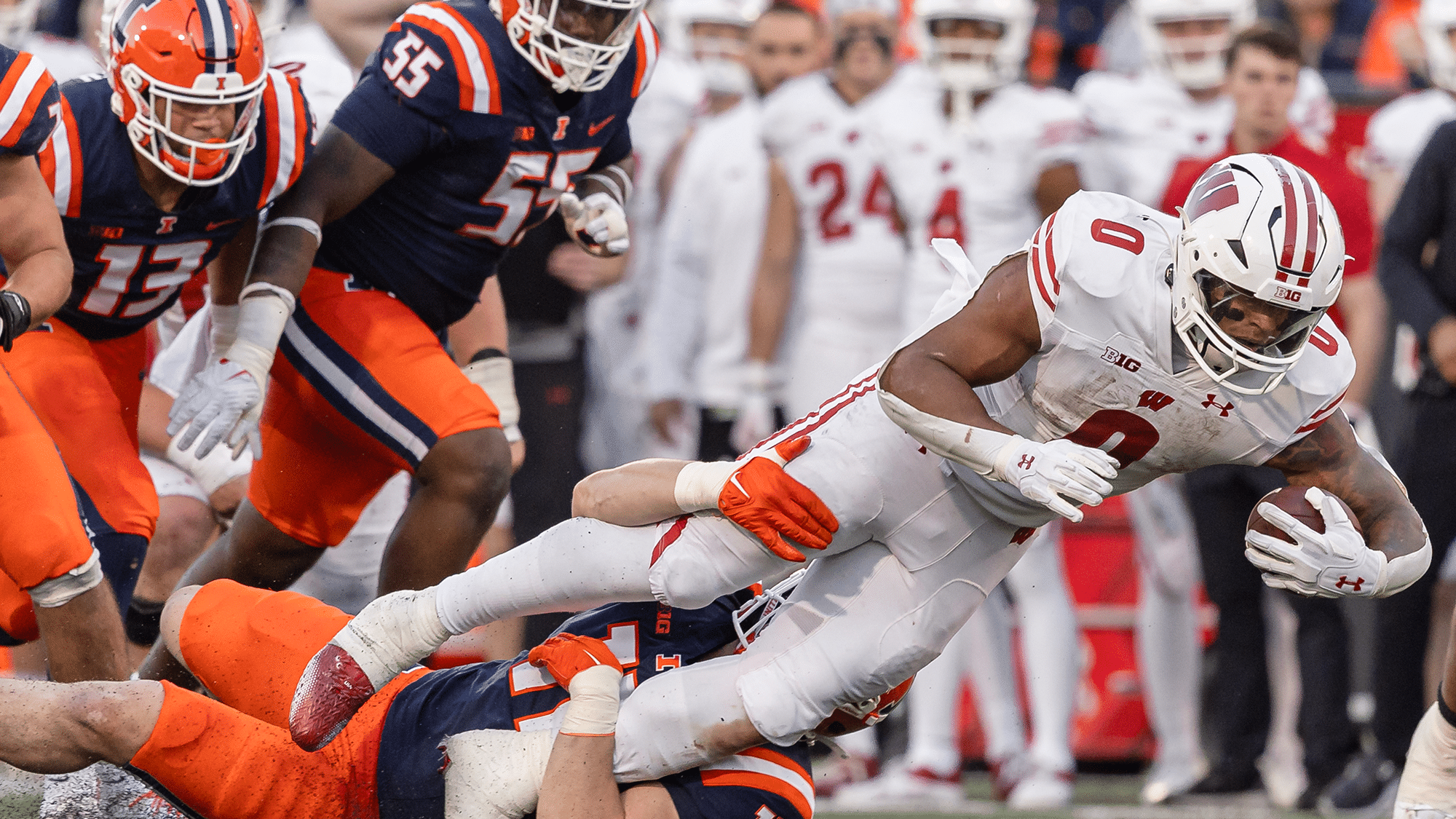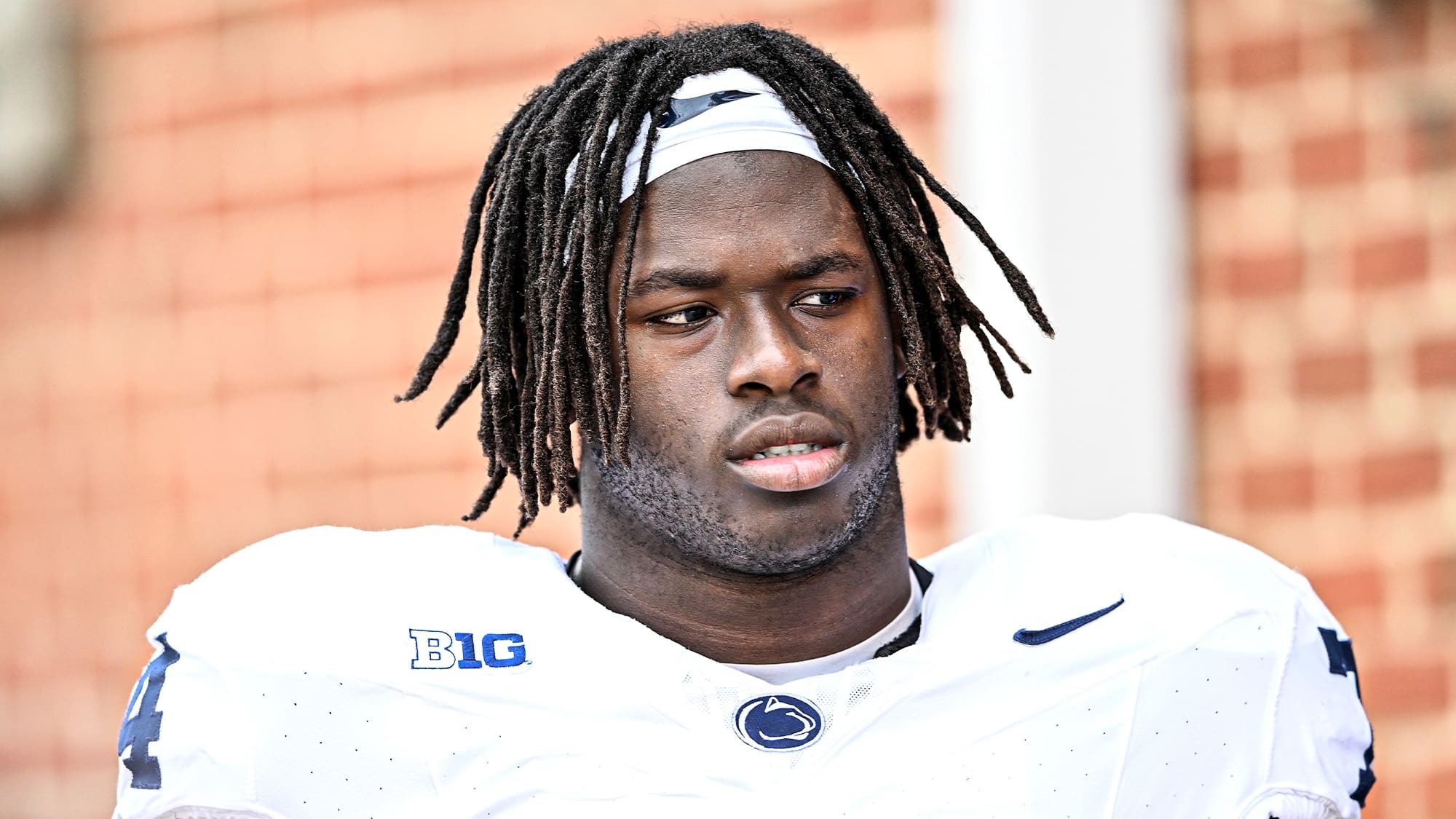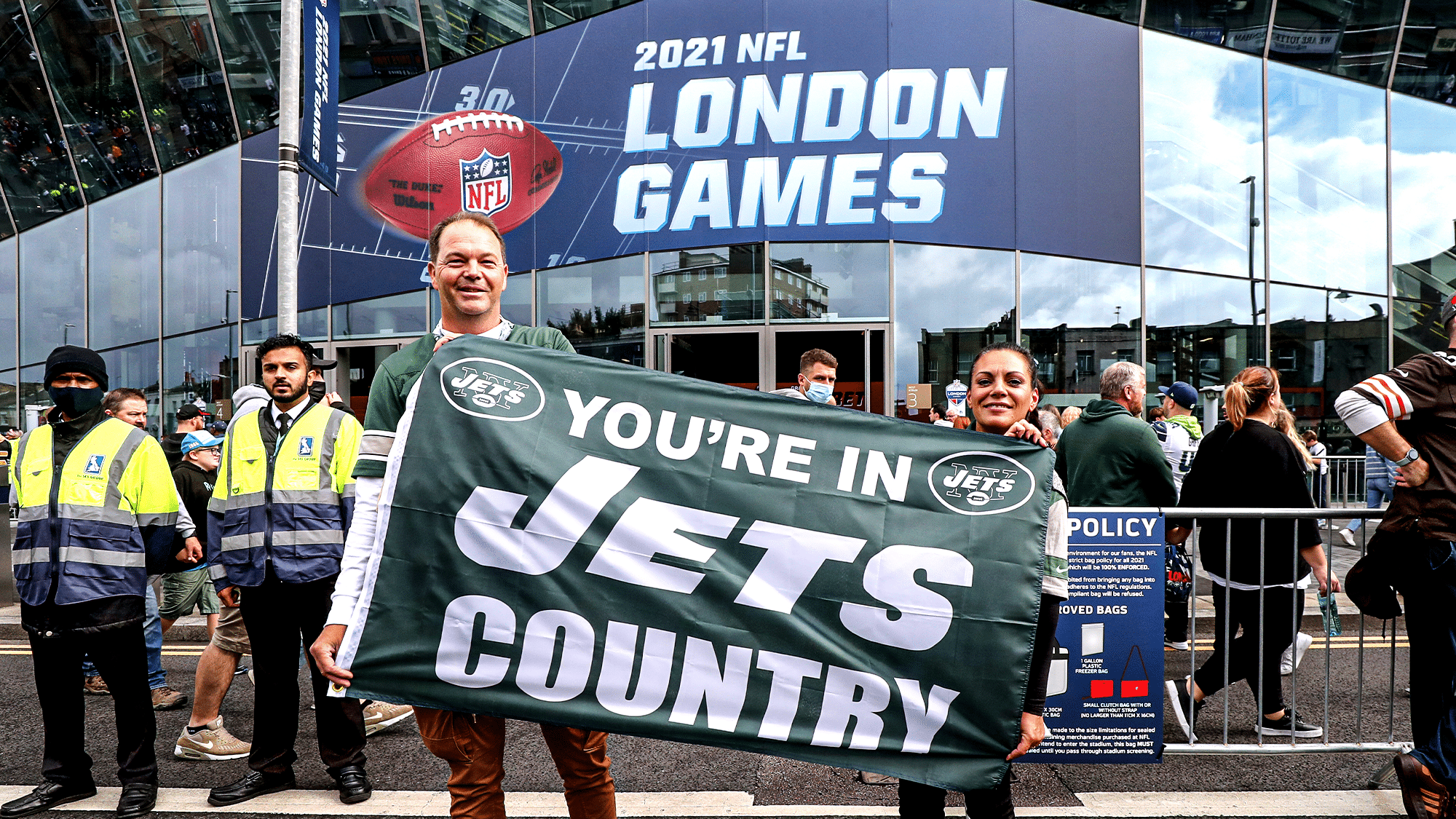The New York Jets added a much-needed accomplished blocker to their tight end room in the form of Tyler Kroft.
Blocking at the tight end position has been one of the New York Jets‘ most overlooked problems for many years running. Quite a bit of time has passed since the Jets had a tight end group – or even just one tight end – that could consistently block at an effective level.
With the addition of former Bills and Bengals tight end Tyler Kroft, the Jets have their most respected blocking tight end in a long while.
Positives
Pass protection
Kroft is an excellent pass protector. For his career, he has yielded 13 pressures over 280 snaps in pass protection, a solid rate of 4.6%. The average for tight ends in 2020 was 6.8%. In recent years, Kroft has been even better, giving up three pressures over 93 protection snaps (3.2%) since 2018.
This past season, Kroft posted a pass blocking grade of 79.1 at Pro Football Focus, ranking sixth-best out of 69 qualified tight ends (93rd percentile).
Run blocking
Kroft earned a run blocking grade of 63.8 at PFF in 2020, placing at the 68th percentile among qualified tight ends. In 2019, he was up at 66.6, landing at the 84th percentile.
Here is a look at Kroft’s season-by-season ranks in PFF’s blocking grades. He was a bit erratic during his Cincinnati days, but stabilized with a pair of very good seasons in Buffalo.
Negatives
Durability
Kroft played in 46 out of 49 (93.9%) possible regular season and playoff games over his first three seasons with the Bengals, but since then, he has had a very hard time staying on the field. Kroft has missed at least six games (playoffs included) in three consecutive seasons, playing in just 27 out of 52 (51.9%) possible regular season and playoff games from 2018-20.
In 2018, Kroft played only five games before suffering a season-ending foot injury.
In 2019, Kroft broke his foot during OTAs and wound up missing the first five games of the season.
Kroft played only 10 games in the 2020 regular season before missing each of Buffalo’s three playoff games. All of his missed games were spent on the reserve/COVID-19 list. So, he at least went through this past season without any non-COVID injuries.
Receiving impact
Kroft is not a complete zero in the passing game, but he isn’t going to do much as a receiver. He did score three touchdowns in 2020, but he had only one touchdown over 16 games throughout the previous two seasons.
For his career, Kroft has averaged 11.8 yards on 1.2 receptions per game (about 189 yards and 19 catches per 16 games). He has 12 touchdowns in 72 games, an average of 2.6 per 16 games.
Over his five campaigns outside of the 2017 season – in which Kroft posted seven touchdowns, 25.3 yards, and 2.6 receptions over 16 games – Kroft has averaged just 8.0 yards on 0.8 catches with five touchdowns in 56 games (about 128 yards, 13 catches, and 1 touchdown per 16 games).
In 2020, Kroft caught 12-of-16 targets for 119 yards, three touchdowns, and six additional first downs over 10 games.
Kroft has below-average elusiveness with a career rate of 4.5 yards after catch per reception (2020 average: 4.7) and 0.071 broken tackles per reception (2020 TE average: 0.094).
Kroft is also below-average in contested-catch situations with five career contested catches on 13 targets, a 38.5% rate (2020 TE average: 48.2%).
Drops are a problem for Kroft as well. He has nine career drops against 85 receptions for a drop rate of 9.6%, much higher than the 2020 positional average of 6.2%. He has dropped at least one pass in all six of his career seasons.
While Kroft has only been on the field for 12.4 receiving snaps per game throughout his career, a lack of volume can’t fully be blamed for his lack of production. He doesn’t produce much on a per-play basis, either, as his career average of 0.95 yards per route run is well below the 2020 position average of 1.27.
Usage/role
Exemplifying the confidence that teams have in his blocking ability, Kroft has been asked to block more often than he has been asked to run a route in the passing game. Of his 2,206 career snaps, he run-blocked on 45.1% of them, ran out to catch a pass on 42.5%, and stayed in to pass-protect on 12.4%.
Kroft’s snap distribution in 2020: 58.4% as an in-line tight end, 19.1% in the backfield, 17.1% in the slot, and 5.4% out wide. That was a large increase in versatility compared to 2019, in which he had only one snap in the backfield and played in-line 78.7% of the time.
In 2020, Kroft participated in about 47% of Buffalo’s offensive snaps in his average game, an increase over his 35% average in 2019. His 2020 role was highly fluctuant as the Bills used him on as high as 78% of the snaps and as few as 5% of the snaps, while his 2019 role was a bit more stable with a maximum of 56% and a minimum of 18%.
Film
Kroft’s high-quality pass protection will be a big assist for a Jets team that has seen its tight ends yield a lot of heat on the quarterback over the past few years.
At H-back on this play, Kroft kicks out to block the wide-9 tech (Harold Landry, Tennessee’s top edge rusher) and runs him out of the screen. Good patience and framing by Kroft as he positions himself to attack the inside hip, and nice hand placement as he accurately hits the inside shoulder to gain control and use Landry’s momentum against him.
Kroft works with right tackle Daryl Williams on a double-team against the 7-technique defensive end (Taco Charlton). Williams extends his right arm to help out Kroft, but stays on the look out for any other threats, so Kroft takes matters into his own hands. Kroft slides inside and works his hands into Charlton’s chest, moving him to the outside. On Charlton’s second effort, Kroft moves Charlton back inside where Williams can pick him up. The right edge is kept completely clean.
Let’s get into some of Kroft’s nastiest blocks in the run game.

